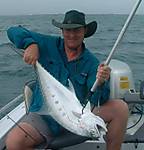1⁄32Tamiya Mossie: A Plastic Wonder?
What is there to say about Tamiya’s newest release that hasn’t been said many times before? Therefore, I won’t bore you with an exhaustive parade of superlatives and instead, I’m going to go straight for the jugular and tell you what was wrong with it. Right, here goes………………
Ok, that’s not working. Typical Tamiya, eh? Once again, their labours have paid off big time for the modeller who wants a kit that will offer little or no obstacles during its construction, allowing them to bask in the sheer giddy enjoyment of parts falling together. Maybe this part of the process is your least favourite, the painting and weathering being the icing on your cake, in which case you can safely prance through the meadow of assembly with gay abandon knowing little will stand in your way.
The comprehensive 52 page instruction book breaks no modelling taboos and as expected, has you start with the cockpit. 16 steps later you are sewing up one of the best-detailed offices this side of resin. That’s not to say it wouldn’t benefit from the odd bit of aftermarket – be that scratch-built by your own fair hands or bought in – but I chose to build out-of-box and I am in no way disappointed by what I can see through the crystal clear canopy. I did replace Tamiya’s hull-plate-thick photoetch seat harnesses with a set of fabric belts by HGW as I like to place mine in a manner than looks like they’ve been cast haphazardly aside and this can be tricky with heavy-duty etch.
Whilst at this stage, coupled with the things that make a Mosquito fly are the things designed to make other aircraft not fly – the 4 7.7mm Browning machine guns which along with their ammo boxes and feeder belts are part of the cockpit assembly process. If you so desired, you could simply stop here and display this gorgeous sub-assembly all by it lonesome – it’s that good.

















